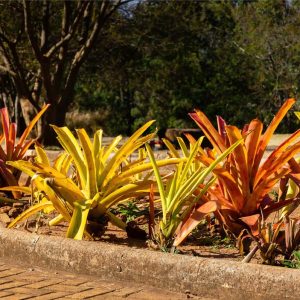Description
Tillandsia – Air Plant –
There are over 400 epiphytic, terrestrial or rock dwelling, evergreen rosette forming perennials (bromeliads) in this genus. They are found naturally occurring from scrub and woodland in Southeastern USA, the West Indies to the Southern most tip of South America. The smooth edge, often scaly leaves are strap shaped to narrowly triangular to linear, sometimes tapering to fine threads ,, they are mainly borne in rosettes, and sometimes have prominent sheaths. Most species have tubular To funnel shape flowers, each with three sepal and three petals, often with spreading terminal lobes, they are borne among usually colorful floral bracts, generally opening in daytime in spring or autumn. The flowers may be solitary but are usually in 2 or more opposite rows, forming dense racemes or spikes, which sometimes grouped into compound inflorescences, the flowers are borne mainly at the ends of scapes that have sometimes dense or colorful bracts. Where temperatures fall below 45 degree Fahrenheit grow indoors.
Under glass, grow epiphytically in bright indirect light, with moderate to high humidity, rock dwelling species prefer full light with shade from hot sun, and will tolerate low humidity. Constant air movement is essential. From late spring to mid autumn, mist daily, and apply a quarter strength low nitrogen liquid fertilizer monthly. In winter, mist once or twice a week. Grow terrestrial species, and T. cyanea and T. lindenii,, in containers of mesic bromeliad potting mix, with the bases of the leaves at or just above the surface, in bright filtered light. In growth, water freely and apply a half strength, low nitrogen fertilizer monthly, keep just moist in winter.
Prone to Fusarium rot, scale insects, and mealybugs.
T. leiboldiana – This stemless, epiphytic perennial from Mexico and Central America grows 12-24″ tall and wide. It produces funnel shaped rosettes of slender, lance shaped, mid green leaves, to 6″ long, with flat, brown scaly sheaths. Branched spikes of 3-8 tubular violet flowers, 1 1/4″ long, with red or purple floral bracts, are produced in late spring.
Zones 12-15



